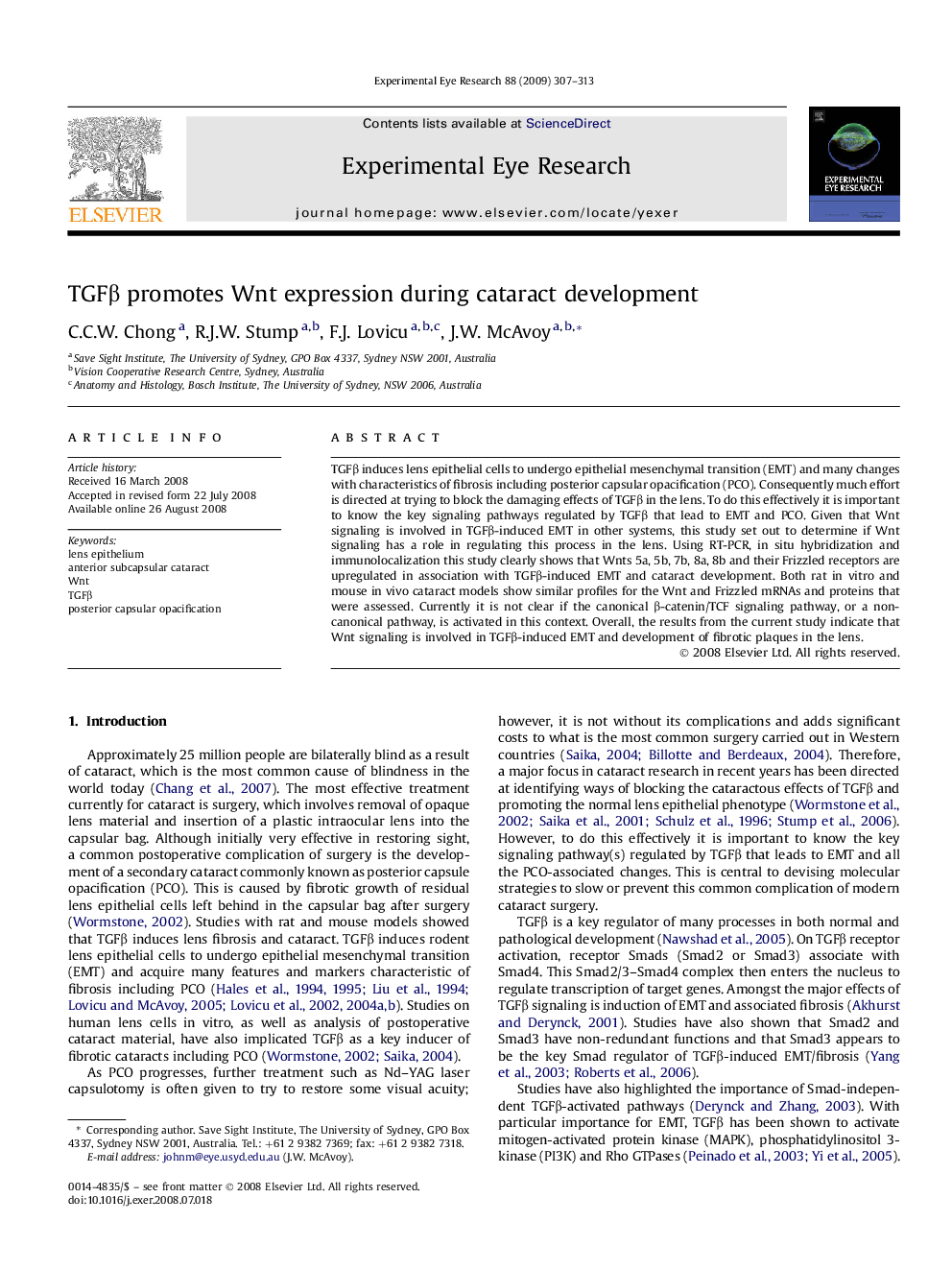| Article ID | Journal | Published Year | Pages | File Type |
|---|---|---|---|---|
| 4012119 | Experimental Eye Research | 2009 | 7 Pages |
TGFβ induces lens epithelial cells to undergo epithelial mesenchymal transition (EMT) and many changes with characteristics of fibrosis including posterior capsular opacification (PCO). Consequently much effort is directed at trying to block the damaging effects of TGFβ in the lens. To do this effectively it is important to know the key signaling pathways regulated by TGFβ that lead to EMT and PCO. Given that Wnt signaling is involved in TGFβ-induced EMT in other systems, this study set out to determine if Wnt signaling has a role in regulating this process in the lens. Using RT-PCR, in situ hybridization and immunolocalization this study clearly shows that Wnts 5a, 5b, 7b, 8a, 8b and their Frizzled receptors are upregulated in association with TGFβ-induced EMT and cataract development. Both rat in vitro and mouse in vivo cataract models show similar profiles for the Wnt and Frizzled mRNAs and proteins that were assessed. Currently it is not clear if the canonical β-catenin/TCF signaling pathway, or a non-canonical pathway, is activated in this context. Overall, the results from the current study indicate that Wnt signaling is involved in TGFβ-induced EMT and development of fibrotic plaques in the lens.
